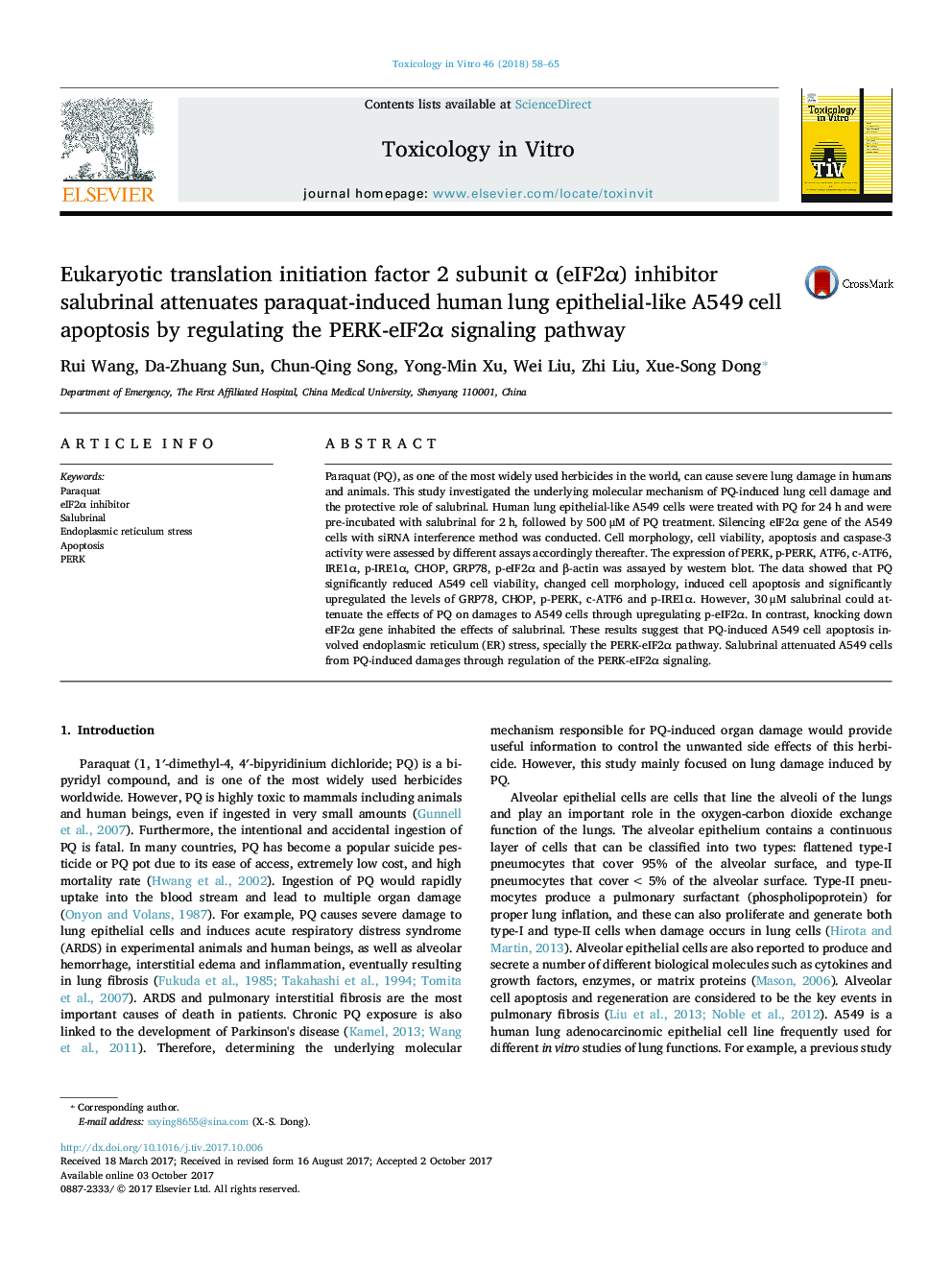| Article ID | Journal | Published Year | Pages | File Type |
|---|---|---|---|---|
| 5562483 | Toxicology in Vitro | 2018 | 8 Pages |
â¢PQ-induced apoptosis in human lung epithelial-like A549 cells was investigated.â¢PQ-induced A549 cell apoptosis involved the endoplasmic reticulum (ER) stressâ¢Salubrinal attenuated PQ-induced A549 cell apoptosis.â¢eIF2α played a direct role in salubrinal attenuating PQ-induced A549 cell damage.
Paraquat (PQ), as one of the most widely used herbicides in the world, can cause severe lung damage in humans and animals. This study investigated the underlying molecular mechanism of PQ-induced lung cell damage and the protective role of salubrinal. Human lung epithelial-like A549 cells were treated with PQ for 24 h and were pre-incubated with salubrinal for 2 h, followed by 500 μM of PQ treatment. Silencing eIF2α gene of the A549 cells with siRNA interference method was conducted. Cell morphology, cell viability, apoptosis and caspase-3 activity were assessed by different assays accordingly thereafter. The expression of PERK, p-PERK, ATF6, c-ATF6, IRE1α, p-IRE1α, CHOP, GRP78, p-eIF2α and β-actin was assayed by western blot. The data showed that PQ significantly reduced A549 cell viability, changed cell morphology, induced cell apoptosis and significantly upregulated the levels of GRP78, CHOP, p-PERK, c-ATF6 and p-IRE1α. However, 30 μM salubrinal could attenuate the effects of PQ on damages to A549 cells through upregulating p-eIF2α. In contrast, knocking down eIF2α gene inhabited the effects of salubrinal. These results suggest that PQ-induced A549 cell apoptosis involved endoplasmic reticulum (ER) stress, specially the PERK-eIF2α pathway. Salubrinal attenuated A549 cells from PQ-induced damages through regulation of the PERK-eIF2α signaling.
